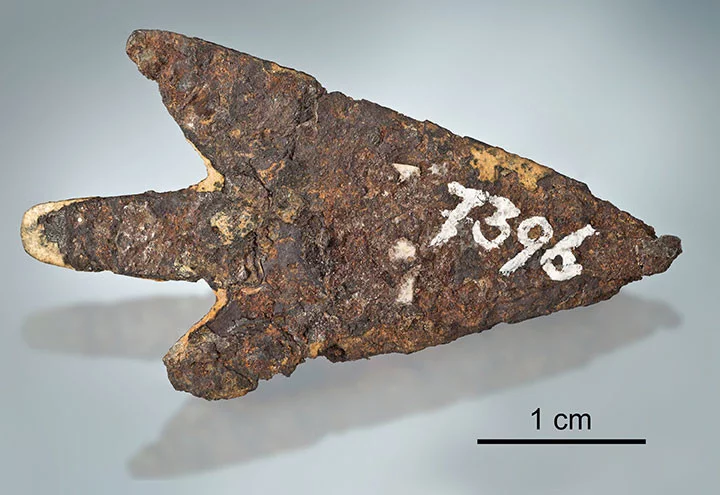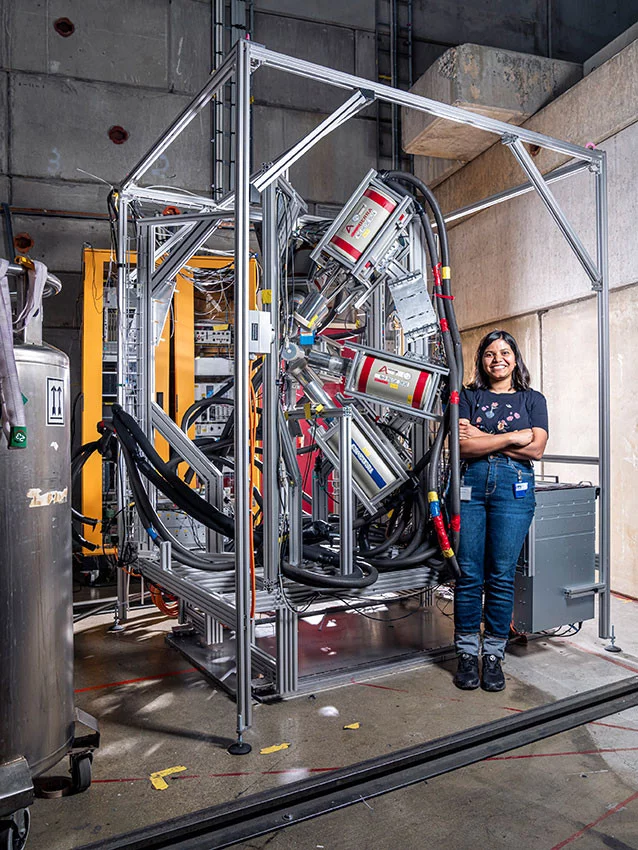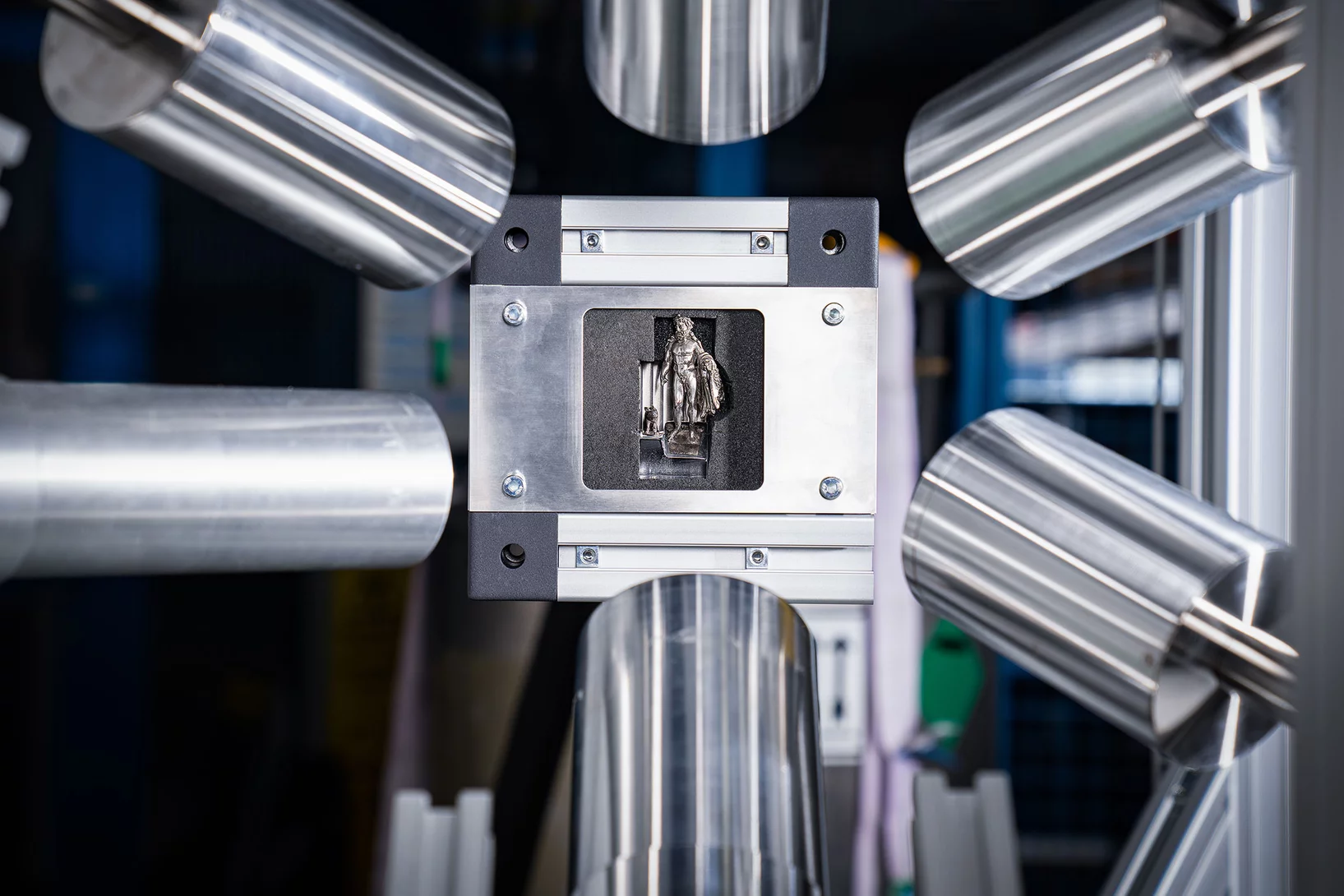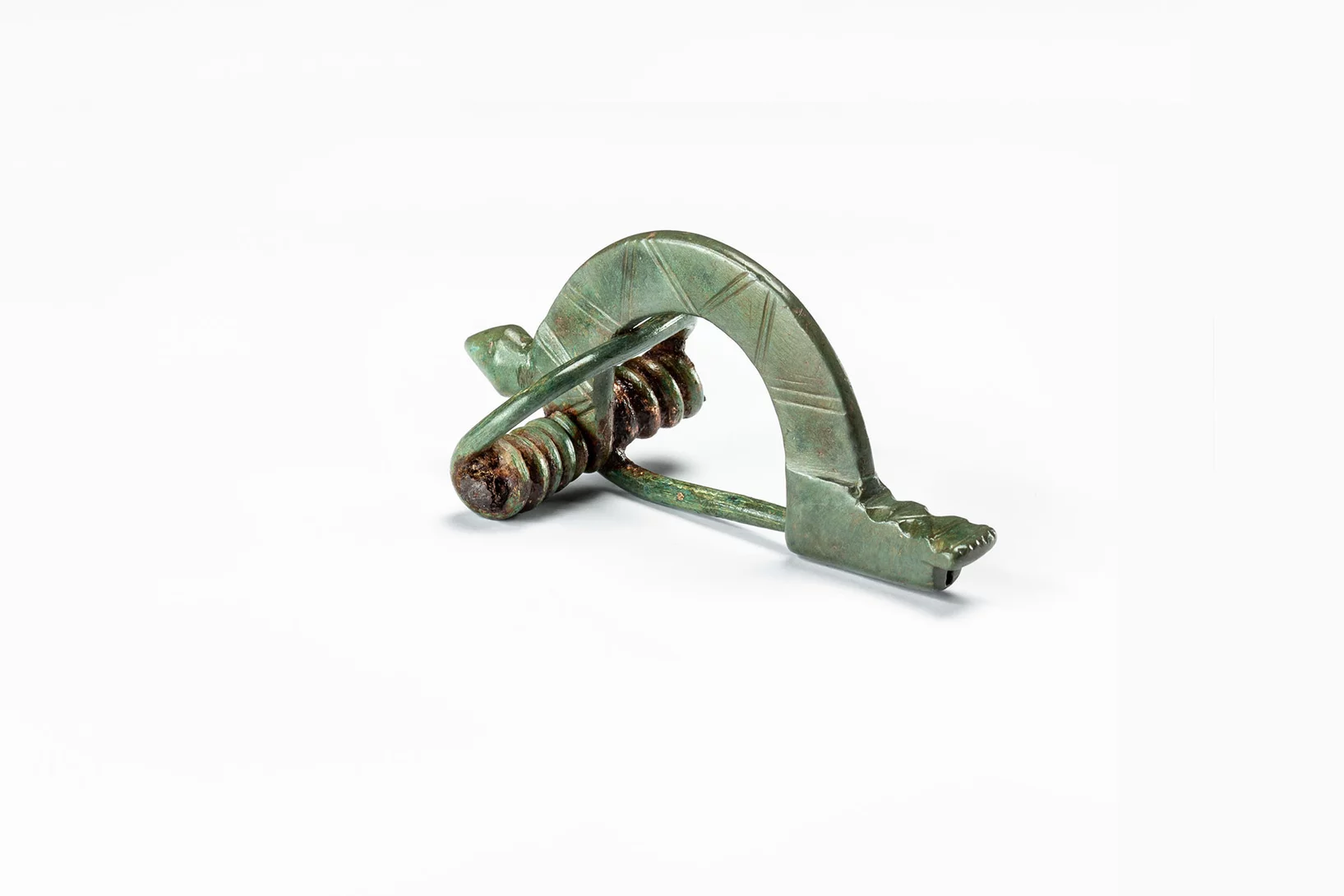In an interdisciplinary study led by the Natural History Museum in Bern, researchers were able to decipher the origin of the material used for a Bronze Age arrowhead. The iron used came from a meteorite. The complex analysis of the archaeological object was carried out using, among other methods, the Swiss Muon Source SμS at PSI.
The art of extracting iron from ores has been known in Central Europe since the beginning of the Iron Age around 800 BC. Before that, the metal was considered extremely rare and was only known from meteorites. Archaeological objects made from meteoritic iron are, however, extremely rare. In the whole of Eurasia and Africa, only 55 objects from 22 sites are known. Nineteen of these objects all come from the tomb of Tutankhamun in Egypt. However, until now only a small number of the artefacts suspected of being made of meteoritic iron have been examined using modern analytical methods.
In a study led by the Natural History Museum Bern, researchers have now found another archaeological object with a clear meteoritic origin: the arrowhead from Mörigen (Lake Biel, Switzerland). The results of their detailed and non-destructive tests have been published in the Journal of Archaeological Science.
The meteorite strewn field and the pile-dwelling site
Around 170,000 years ago, a gigantic iron shower came down over the Twannberg in the Bernese Jura, near the town of Biel. A meteorite with a diameter of at least 4 metres, corresponding to a mass of at least 250 tonnes, entered our atmosphere and was torn into countless pieces that rained down on the Stone Age Jura landscape. The impact area is thought to have extended for up to 15 kilometres. This makes it not only the largest meteorite strewn field in Switzerland, but also one of the largest in Europe.
Beda Hofmann, Head of Earth Sciences at the Natural History Museum Bern and lead author of the study, has been researching this strewn field for several years. In collaboration with researchers from the Physics Institute of the University of Bern and private meteorite collectors, he has already identified more than 2000 fragments of this meteorite and reconstructed their history.
Parallel to this research, numerous archaeological objects from the region have also been examined for meteoritic origin. Using a portable X-ray fluorescence measuring device, the researchers analysed various archaeological objects for the high nickel content that is typical of meteorites. Could pieces of the Twannberg meteorite have been known and used long ago?
In February 2021, after many failed attempts, a Bronze Age arrowhead was successfully identified as being of meteoric origin at the Bern Historical Museum. The analyser triggered and showed a high nickel content. The researchers were able to clearly identify the 39 millimetre long and 2.9 gram object as being made of meteoritic iron.
The arrowhead comes from a Bronze Age pile-dwelling site near Mörigen on Lake Biel, dating from around 900 to 800 BC, and was probably discovered during excavations in 1873. The site is only a few kilometres from the Twannberg meteorite strewn field. The geographical proximity suggests that the arrowhead may have been made from meteorite fragments from Twannberg. But how can such a conjecture be proven?
Muons decode the fingerprint of the elements
In addition to well-known analytical methods such as optical microscopy, scanning electron microscopy or X-ray tomography, which were mainly used to examine the structure of the various layers in the arrowhead, muons were also used. Muons are elementary particles that occur naturally as part of cosmic radiation and pass through our planet and our tissue virtually every second. Muons are similar to electrons in many of their properties and also carry a negative charge. However, their mass is around 200 times greater.
At PSI, these particles are generated artificially with the help of a large accelerator and used, among other things, for the chemical analysis of samples. "With muons, we can examine an object non-destructively to see which chemical elements it contains," explains Sayani Biswas, a physicist at the Laboratory for Muon Spin Spectroscopy at PSI and co-author of the study.
Biswas explains how the experiment works: "The arrowhead is placed on the sample holder surrounded by detectors. Then we fire the muons at it." The particles penetrate the material. If a muon has the right energy, it is captured by an atom in the sample. Instead of an electron, a muon now orbits the atomic nucleus. While it starts off in an energetically excited state, it gradually loses energy and falls to the ground state. The "lost" energy is emitted in the form of X-rays and is registered by the detectors.
The detected X-rays are characteristic of each type of atom, i.e. the element that captured the muon. This makes it possible to uniquely identify each element that is present – like a fingerprint.
Not Twannberg after all?
The various analytical methods have clearly shown that the arrowhead is a piece of iron meteorite – but surprisingly not from Twannberg!
The nickel content in the arrowhead is about 8.3 percent, almost twice as much as in the Twannberg meteorite. The high germanium content also suggests that this is a different type of meteorite. The most likely candidate is the Kaalijarv meteorite, which fell in Estonia during the Bronze Age around 1500 BC. The impact of this meteorite created several craters up to 100 metres in diameter. Since the largest pieces of the meteorite exploded on the ground, many small fragments must have been created, which our ancestors could use for further processing.
The geographically closest archaeological sites with objects made of meteoritic iron in Europe are in Poland. But again, they are clearly not the same meteorite as the Mörigen arrowhead. Further analyses in archaeological collections in Europe might help to confirm whether the meteorite can be traced to Estonia. The arrowhead has now been given the official meteorite name "Mörigen" by the Meteoritical Society.
Contact
Original publication
-
Hofmann BA, Bolliger Schreyer S, Biswas S, Gerchow L, Wiebe D, Schumann M, et al.
An arrowhead made of meteoritic iron from the late Bronze Age settlement of Mörigen, Switzerland and its possible source
Journal of Archaeological Science. 2023; 157: 105827 (10 pp.). https://doi.org/10.1016/j.jas.2023.105827
DORA PSI




